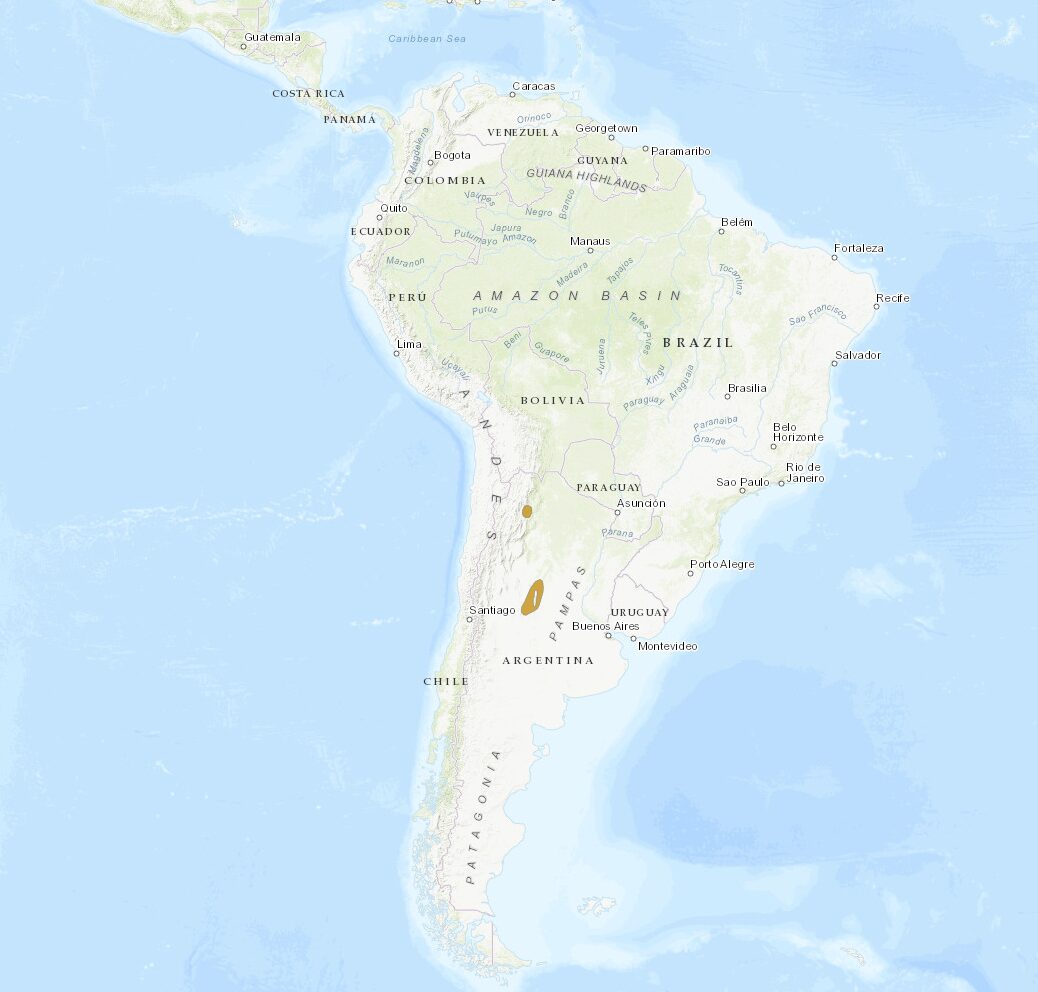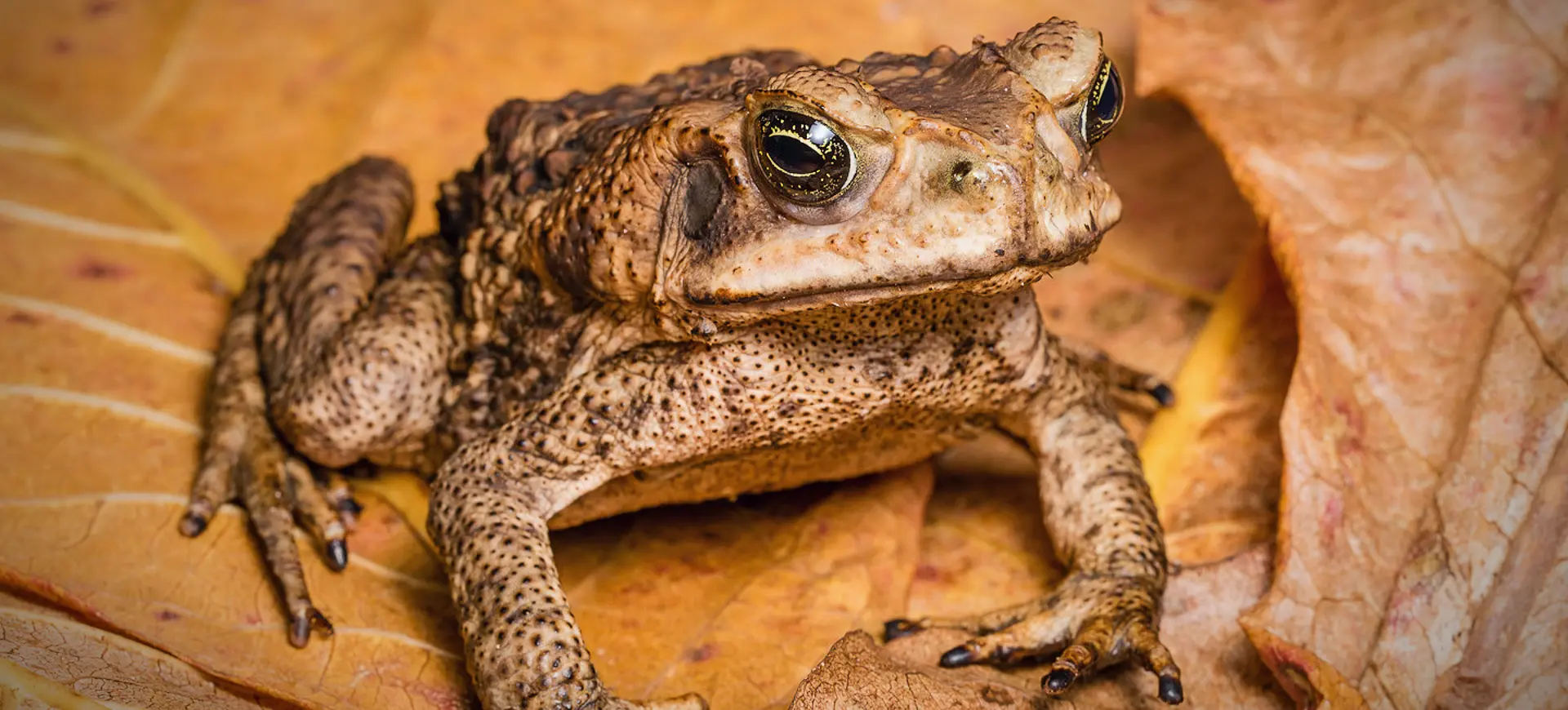Overview
The Redbelly Toad, scientifically known as Melanophryniscus stelzneri, is a small, strikingly colored amphibian native to South America. It is particularly recognized for its vivid red belly, which contrasts sharply with its darker, often black dorsum. This species is part of the Bufonidae family, commonly referred to as the true toads. It exhibits a daily lifestyle unusual for toads, which are typically nocturnal, making it a subject of interest among researchers and enthusiasts.
The Redbelly Toad inhabits moist environments which offer abundant cover and suitable breeding sites. It is predominantly found in the montane grasslands and shrublands, where temporary pools form during the rainy season, essential for its reproductive cycle. Despite its vibrant appearance, the toad uses its coloration as a warning mechanism to deter predators, a strategy known as aposematism. The toad’s diet primarily consists of small invertebrates, which it hunts during the day.
Due to habitat destruction and pollution, the Redbelly Toad is vulnerable to threats to its survival. Conservation efforts are crucial to mitigate human activity’s impacts, particularly in regions where agricultural expansion encroaches upon natural habitats. Educational programs and protected area management are among the strategies to preserve this unique species for future generations.
Taxonomy
Kingdom
Phylum
Class
Order
Family
Genus
Species
Type
Current distribution:
The Redbelly Toad is currently found in several isolated populations across South America, particularly Argentina. Its range has been affected by habitat loss due to agricultural expansion and urban development. The fragmented populations pose significant challenges to the species' genetic diversity and long-term survival. Conservation measures aim to preserve habitat and connect isolated populations through ecological corridors.
Efforts to map the precise distribution of the Redbelly Toad are ongoing, with several studies aimed at identifying key habitats and population densities. This information is crucial for effective conservation planning and to ensure that protected areas encompass critical habitats. Public awareness campaigns and community involvement are also part of the strategy to safeguard the remaining populations from further decline.
Physical Description:
The Redbelly Toad is small, typically reaching lengths of only about 1 to 2 inches (2.5 to 5 cm), with males generally being smaller than females. Its most distinctive feature is its bright red belly, contrasting with its darker, granular dorsal skin that may appear black or dark brown. The toad’s containtoad’sds can secrete a mild toxin, serving as a defense mechanism against predators. The limbs are robust, aiding in its agility and ability to navigate its rugged, montane habitat.
This species exhibits sexual dimorphism, notably in size and sometimes in the color intensity of the belly. Females are usually larger and occasionally have a more vividly colored ventral side than males. The Redbelly Toad’s toads are small, and the vertiToad’sad’san adaptation aids daily activity. Its overall morphology is well-suited to a life predominantly on the ground, though it can climb low vegetation.

Lifespan: Wild: ~5 Years || Captivity: ~10 Years

Weight: Male: 0.8-1.4 oz (0.02-0.04 kg) || Female: 1.5-2 oz (0.04-0.06)

Length: Male: 1-1.5 in (2.5-3.8 cm) || Female: 1.5-2 in (3.8-5 cm)
Characteristic:
Native Habitat:
The Redbelly Toad is native to the montane regions of South America, where it thrives in moist, cool climates. It requires the presence of temporary pools for breeding, making its habitat highly specific to areas that experience seasonal rains. These pools are crucial for the survival of its entirely aquatic larvae. The surrounding vegetation offers shelter and abundant food, making these environments ideal for this species.
The toad’s habitat is characterized by a mix of grasslands and shrublands at high elevations. These areas are often subject to human activities such as farming and livestock grazing, which can lead to habitat degradation. Conservation of these habitats is critical for maintaining the population of the Redbelly Toad, as it relies heavily on the ecological integrity of its native environment for survival and reproduction.
Biomes:
Biogeographical Realms:
Continents:
Countries:
Diet:
Diet & Feeding Habits:
The Redbelly Toad is an insectivore, primarily consuming small invertebrates such as insects and arthropods. It employs a sit-and-wait strategy, remaining still until prey comes within striking distance. This method is particularly effective in its habitat’s dense vegetation, where movement can startle potential prey. The diet varies seasonally, depending on the availability of different prey species in its montane environment.
In captivity, the Redbelly Toad can be fed a variety of small invertebrates, including crickets, fruit flies, and small worms. To maintain health and vitality, it is essential that their diet in captivity mimics their natural diet as closely as possible. Supplemental vitamins and minerals are often recommended to prevent nutritional deficiencies. Proper feeding is crucial for the toad’s vivid coloration, which can be a sign of good health and adequate nutrition.
Mating Behavior:
Mating Description:
The Redbelly Toad’s mating system is characterized by explosive breeding events, where numerous males gather around temporary pools formed by seasonal rains. These events are critical for the species, as the availability of breeding sites dictates production timing and success. Males call to attract females, using relatively quiet vocalizations compared to other amphibian species. The competition among males can be intense, often resulting in physical contests.
Females lay clutches of eggs in these temporary pools, where the aquatic larvae develop. The entire breeding process depends on rain and suitable conditions in the pools. The larvae are vulnerable to predation and environmental fluctuations, making their early life stages critical for survival. Conservation efforts that focus on protecting and restoring these breeding sites are essential for the species’ reproduction success.
Reproduction Season:
Birth Type:
Pregnancy Duration:
Female Name:
Male Name:
Baby Name:
Social Structure Description:
The Redbelly Toad exhibits a mostly solitary lifestyle outside of the breeding season. Individuals occupy specific territories, which they defend from others of the same species. These territories are essential for foraging and provide access to shelter and suitable microhabitats. Social interactions are generally limited to the breeding season when toads gather in large numbers around breeding sites.
During breeding, males may demonstrate social hierarchies, competing for prime positions to attract females. This competitive behavior is crucial for mating success and can involve vocal challenges and physical confrontations. Females select mates based on these displays, which indicate the males’ fitness and territory quality. Understanding these social dynamics is important for conservation efforts, particularly in designing protected areas that support healthy populations.
Groups:
Conservation Status:
Population Trend:
The Redbelly Toad population is considered vulnerable, with numbers declining in several regions. The primary threats include habitat loss, pollution, and the introduction of invasive species that compete for resources or predate on the toads. The toad’s reliance on specific breeding sites makes it susceptible to environmental changes that disrupt these areas. Monitoring and research are ongoing to better understand population trends and to implement effective conservation strategies.
In response to these challenges, conservation programs focus on habitat preservation and restoration, as well as public education, to reduce the impact of human activities. Some regions have established protected areas to safeguard critical habitats, and efforts are being made to restore degraded areas. These actions are crucial for the survival of the Redbelly Toad, as they help maintain the ecological balance necessary for its life cycle and long-term viability.
Population Threats:
The primary threats to the Redbelly Toad include habitat destruction due to agricultural expansion, urban development, and pollution. These activities degrade the toad’s natural habitat, particularly affecting the temporary pools needed for breeding. Climate change also poses a significant threat, as changes in precipitation patterns can lead to the loss of these critical breeding sites. Additionally, introducing non-native species has increased predation and resource competition.
Conservation efforts must address these threats by promoting sustainable land use practices and establishing protected areas. Public awareness and community engagement are also vital in mitigating the impact of human activities. Environmental regulations and enforcement are needed to prevent pollution and manage the introduction of invasive species. Research into the toad’s ecology and reproductive habits can help inform conservation strategies and improve habitat management.
Conservation Efforts:
Conservation efforts for the Redbelly Toad are focused on habitat protection and restoration. Protected areas have been established in key regions to preserve the natural environments crucial for the toad’s survival. Restoration projects aim to rehabilitate degraded habitats, especially breeding sites, to ensure they remain viable for the toad’s reproductive needs. Environmental education programs are also essential, raising awareness among local communities about the importance of conservation and the steps they can take to help.
Research plays a crucial role in conservation, providing valuable data on population dynamics, habitat requirements, and threats. This information guides conservation planning and policy-making, ensuring that efforts are targeted and effective. Partnerships between government agencies, non-profit organizations, and local communities are vital for the success of these conservation initiatives. These collaborative efforts help preserve the RedbellToad’s habitat, and the species can continue to thrive in its natural environment.
Additional Resources:
Fun Facts
- The Redbelly Toad uses its bright red belly as a warning signal to predators about its potential toxicity.
- Unlike many toads, the Redbelly Toad is active during the day, which is relatively unusual among amphibians.
- This species can survive in relatively cool temperatures, thanks to its montane habitat.
- The Redbelly Toad’s coloration can vary significantly between individuals, particularly males and females.
- Conservationists use the presence of the Redbelly Toad as an indicator of environmental health and stability.
- The toad’s eggs are laid in water and hatch into tadpoles entirely aquatic until they metamorphose.
- Environmental changes that affect the rain’s timing can disrupt the Redbelly Toad’s breeding cycle.
- This toad is part of traditional folklore in some cultures within its range, often associated with rain and fertility.
- The species is often studied for its unique adaptations to a daily lifestyle in a predominantly nocturnal order.
- The Redbelly Toad’s vocalizations are considered less loud and melodic than those of other toads, which is adapted for communication in its dense habitat.












